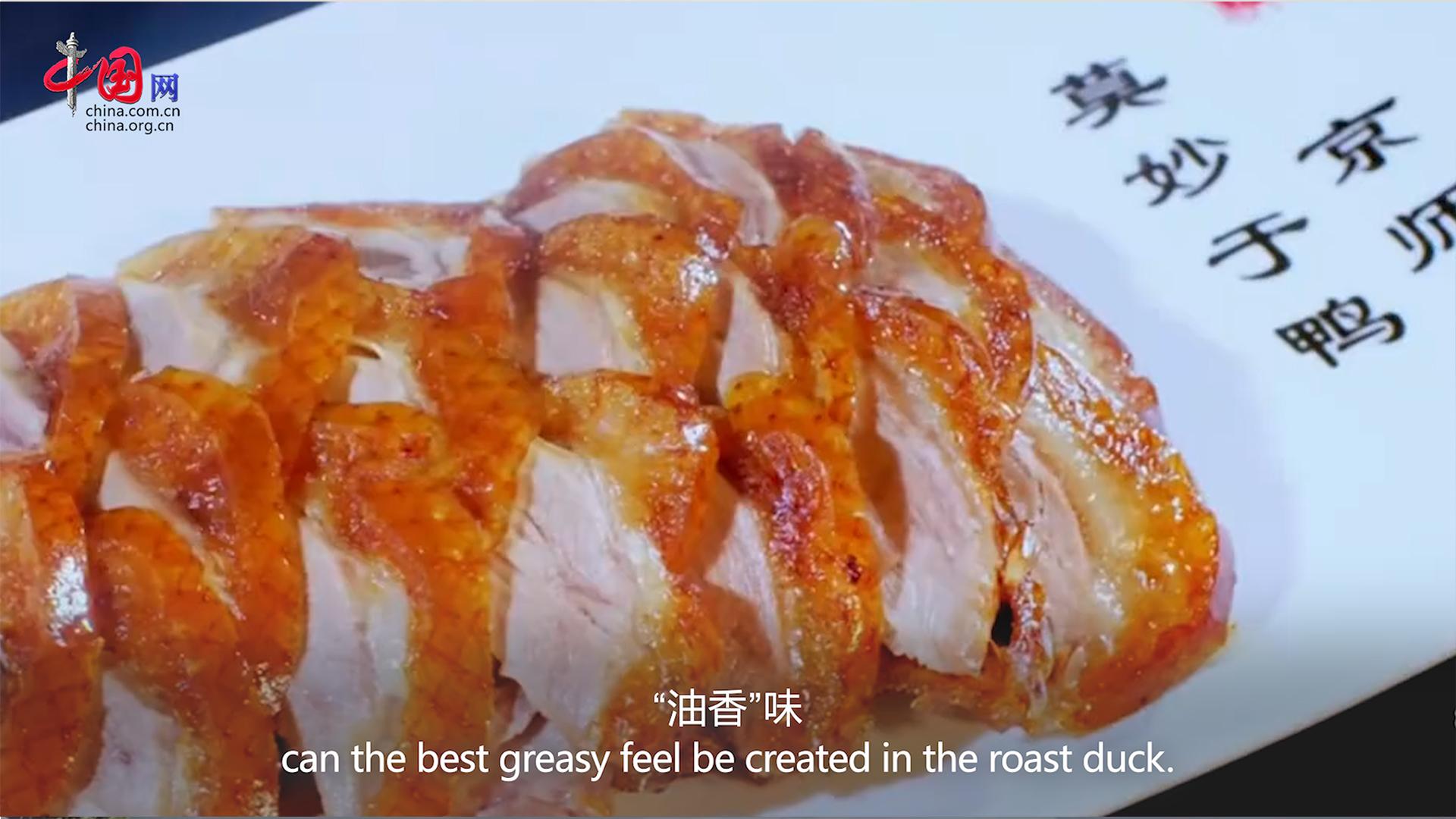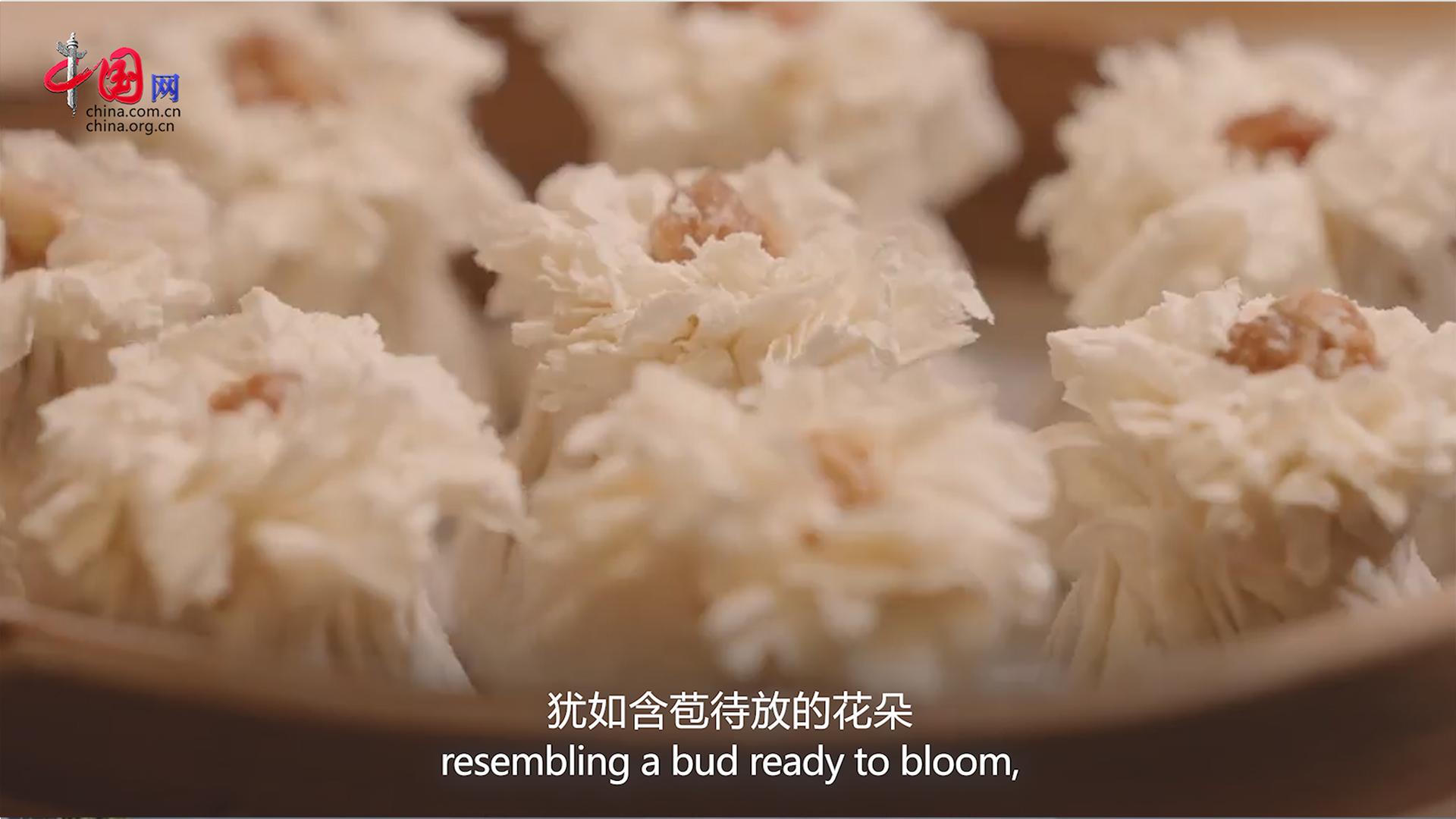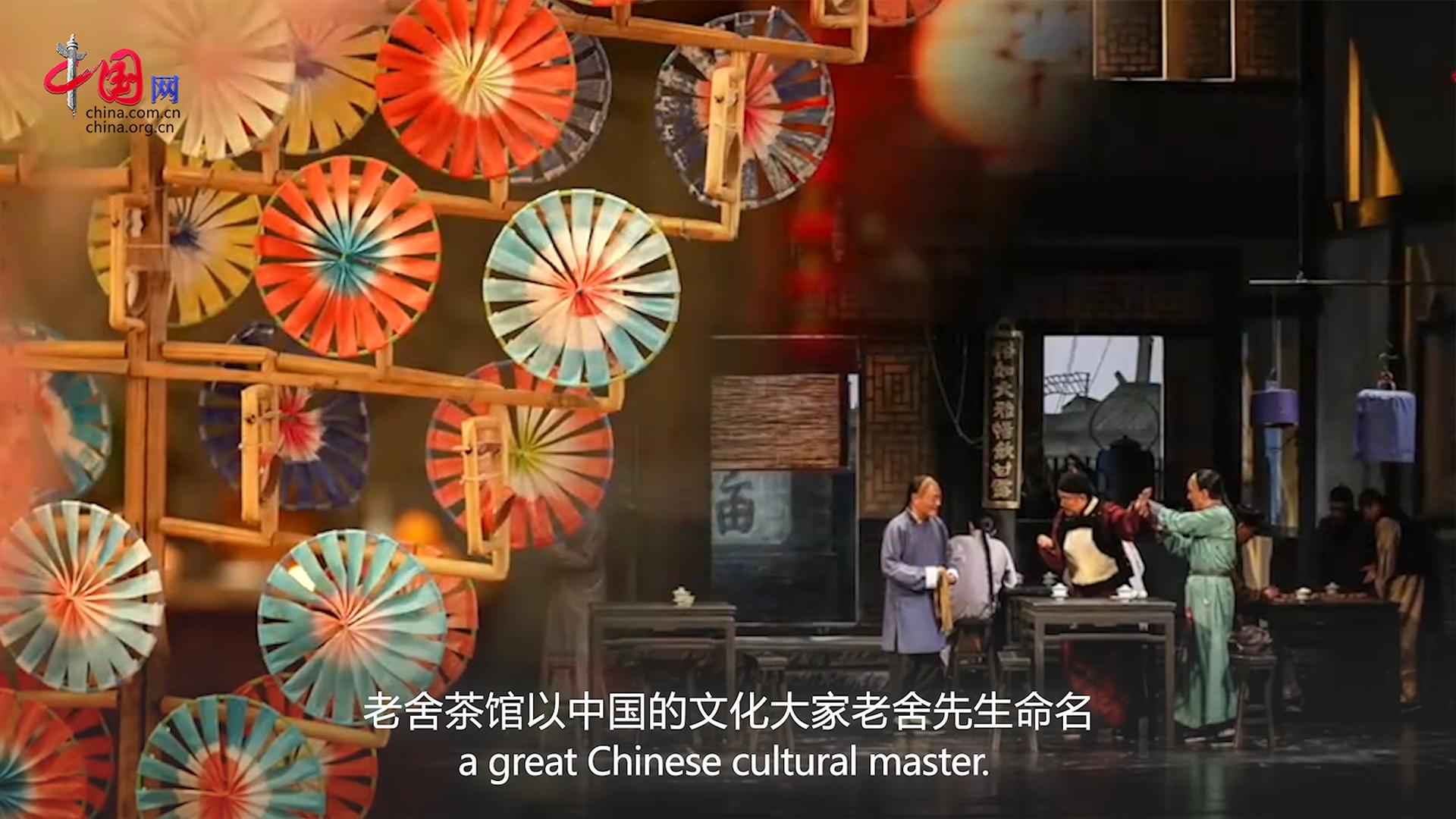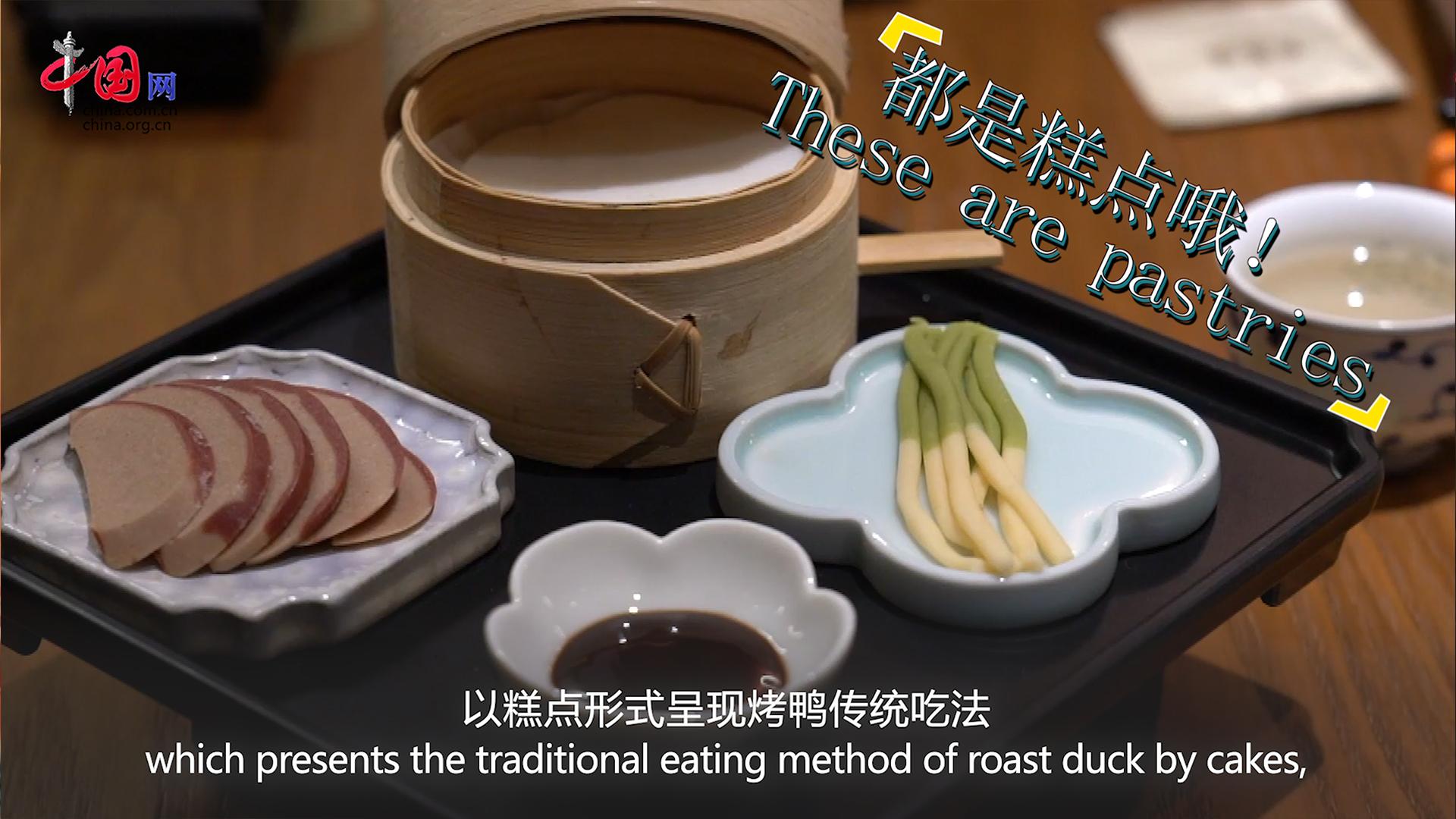中軸線之味:品一品“舌尖上的非遺”
南起永定門,北至鐘鼓樓,這條全長7.8公里的北京中軸線,舉世聞名。從“皇城根兒”到市井街區,中軸線上隱藏著諸多老字號招牌的“非遺”美食。尋味中軸線,讓我們走起吧!
Stretching between the Yongding Gate in the south of the city and the Drum Tower and Bell Tower in the north, the 7.8-km-long Beijing Central Axis, also known as the Chinese capital’s “backbone,” is of global fame. From the surrounding areas of the Forbidden City to the nearby communities, many time-honored brands whose food are intangible cultural heritage are located along this axis. Let’s get on a gourmet tour of the Central Axis!

説到北京美食,烤鴨絕對當仁不讓。全聚德烤鴨作為前門大街上的老字號招牌之一,自清宮傳入民間,經歷代烤鴨師傅堅守,傳承百餘年挂爐烤鴨技藝,宰燙、制胚、烤制、片鴨四大工序,30余道操作環節,才能有那一口烤鴨的“油香”味。
When it comes to Beijing cuisine, roast duck is one signature food. Quanjude roast duck, as one of the time-honored brands on the bustling Qianmen Street, was introduced to the public from the Forbidden City during the Qing Dynasty (1644-1911). Thanks to the persistent practices of generations of roast duck masters, the century-old hanging-style duck roasting techniques have passed on to the present. It includes four major steps of initial treatment, preserving, roasting and slicing, and more than 30 links. Only going through such a sophisticated process can the best greasy feel be created in the roast duck.

吃完烤鴨這道名菜,再來嘗嘗小吃燒麥。這是乾隆皇帝御賜的招牌,店名叫“都一處”。“都一處燒麥製作技藝”已被列入國家級非遺,每一張燒麥皮都有24褶,代表24節氣,缺一不可,成形的燒麥,封口處露餡不幹,猶如含苞待放的花朵,堪稱一絕。
After enjoying the famous roast duck, let’s try shaomai, a traditional steamed pastry in Beijing. This is the signboard given by China’s Qing Dynasty Emperor Qianlong (1736-1795), and it’s called “Duyichu.” Duyichu’s shaomai production skills has been listed as a national intangible cultural heritage. Every shaomai has 24 wrinkles on it, a compulsory set pattern, symbolizing the 24 solar terms in Chinese culture. The shaped shaomai has fresh fillings out at the seal, resembling a bud ready to bloom, which is quite an awe-inspiring technique.

吃食説到這兒,我們再來聊聊喝的。中國茶作為世界非遺歷史悠久,老舍茶館以中國的文化大家老舍先生命名,從二分錢一碗的大碗茶,發展到四合茶院、宮廷茶宴,再到匯聚京劇、戲曲、木偶戲等文化表演活動於一體的京味文化館。
Food aside, let’s talk about drinks. Chinese tea has a long history as a world intangible cultural heritage. Lao She Teahouse is named after Lao She, a great Chinese cultural master. It has developed from a street stall offering big bowls of tea each costing only 0.02 yuan to a traditional Beijing compound teahouse offering tea banquet once exclusive in the imperial palace, and then to a Beijing-style cultural center integrating Peking Opera, other opera, puppet show and other cultural performances.

隨著時代的前行,中軸線上的非遺美食也在守正中創新。烤鴨變糕點,以糕點形式呈現烤鴨傳統吃法,體驗“中軸食禮”下午茶時光。傳統燒麥從單色燒麥品類延伸出“四季時令燒麥”、“奧運五彩燒麥”等品類,讓一款普通的食物變得不普通。
With the advancement of the times, the intangible cultural heritage food along the Central Axis is also innovating while preserving their traditions. The roast duck has made its way into pastry, which presents the traditional eating method of roast duck by cakes, creating an impressive afternoon tea time featuring Central Axis delicacies. Traditional shaomai extends from a single-color delicacy to one with various forms such as showcasing the features of four seasons and the five colors of the Olympic rings, making an ordinary food stand out.

中軸線,從皇家到民間、從古老到現代,正煥發著更多的活力。一道道非遺美食,傳承的是“歷史味兒”,體現的是“發展味兒”。無論是傳統到現代的文化賡續,還是現代向傳統的文化反哺,非遺美食在時間的長河裏經久不衰,靠的是“文化味兒”。
The Central Axis, covering the Forbidden City and the public communities and lasting till today, is brimming with growing vitality. A series of intangible cultural heritage delicacies offers not only a taste of the past, but also a flavor of development. Whether it’s the cultural continuation remaining unchanged in the past and the present, or it’s the cultural enrichment to the traditions by using modern means, what keeps these intangible cultural heritage delicacies enduring is their cultural value.










